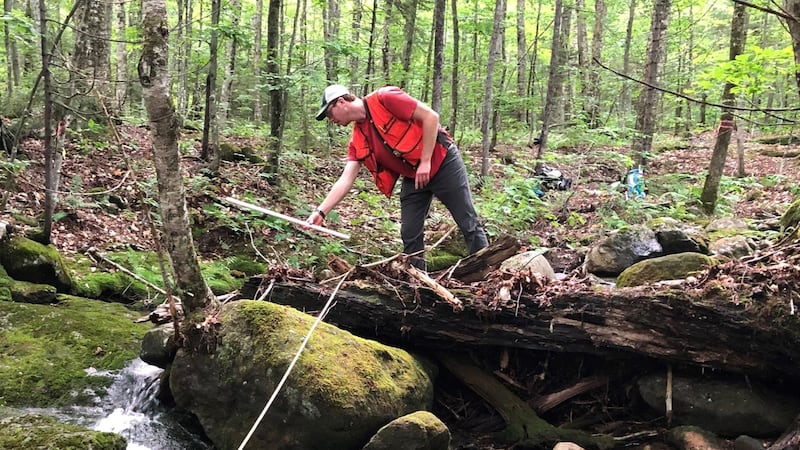Can homes for the ‘missing middle’ be environmentally sustainable?
WAITSFIELD, Vt. (WCAX) - There’s a lot more energy-efficient and sustainable housing popping up around the region, but do the new developments answer the growing call for affordable housing?
Colin Lindberg spent years on construction crews building standard homes. He says he loved the athleticism of building but that he wanted to create homes that make a difference.
“Eventually, I said I’m tired of cutting corners. I want to do it the right way,” Lindberg said.
His company, Shelterwood Construction, builds passive housing which aims to use as little energy as possible for heating and cooling homes. This fall they’re working on a home at the top of a hill in Moretown.
Shelterwood’s builds are fully electric. They feature 12-inch thick exterior walls filled with cellulose insulation made from recycled paper, nearly doubling the home’s insulation. They also include solar panels and ERV HVAC systems which pull in fresh air and push stale air out. “It’s a really balanced feel for the temperature. You know, you can sit right next to a window -- it’s not going to feel cold in the middle of the winter. It always feels like a nice spring day,” Lindberg said.
He says his homes gather as much energy as they use, meaning homeowners only pay for service fees. He says it’s an affordable design once built, but that the construction is costly. Price tags vary, but Shelterwood’s customers are predominantly upper class, and even Lindberg admits he can’t afford to live in one of his creations. “I think it needs to become more mainstream. I would love to be able to build our house for more families and locals, but we haven’t been able to do it yet,” he said.
Another project down the road is trying to cater to this demographic. The 10-acre subdivision, known as the Waitsfield Ten, includes eight small lots designated for sustainable homes for residents making just above or less than the area’s median income -- about $72,700 in 2021.
“There’s an opportunity here to create basically workforce housing. So, for people who want to work and live in the valley, get a regular job,” said Mac Rood, the project’s developer.
Students from Yestermorrow Design Build School are constructing the homes. They feature many of the same elements of Shelterwood’s homes, but are raised off the ground in case of flooding. The property also includes a shared road, well, and wastewater system to minimize costs, environmental impact, and energy use. Land and construction combined, the homes go for roughly $300,000 each.
Rood hopes this kind of construction becomes the norm so that lower-income Vermonters can benefit, too. In the meantime, he says designs like Waitsfield Ten can go a long way to address the state’s missing middle housing development. “I think that’s a big target. You know, it’ll take a long time to fill up that demand,” he said.
State officials say housing is affordable when residents pay no more than 30% percent of their income. Around 17,500 households pay between 30% and 50% of their income on rent and another 17,000 pay more than 50%, according to the Vermont Housing Finance Agency.
Related Stories:
Vt. officials tour communities for missing-middle home ‘toolkit’
Vt. officials, developers gather to discuss homes for the ‘missing middle’
What is affordable housing in Vermont?
A scramble for some Vermont communities as duplexes get fast-tracked
Tourism-driven communities grapple with affordable housing crisis
Copyright 2023 WCAX. All rights reserved.















